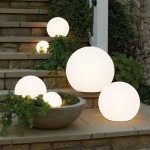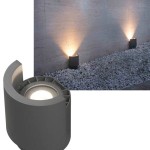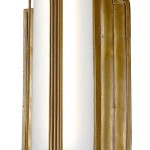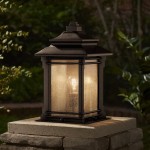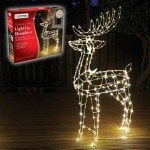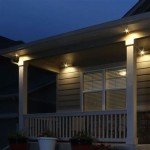Best Outdoor Plants for Little Sunlight
Cultivating a thriving garden does not always require full sun exposure. Many outdoor plants are adapted to, or even prefer, shadier conditions. This article provides a comprehensive overview of plants suitable for areas with limited sunlight, focusing on their characteristics, care requirements, and aesthetic contributions to the landscape. Understanding the specifics of these plants will enable gardeners to create vibrant and flourishing outdoor spaces even in the absence of direct sunlight.
Before delving into specific plant recommendations, it's important to define what constitutes "little sunlight." Generally, this refers to areas receiving less than three hours of direct sunlight per day. This can be further divided into partial shade, which receives two to three hours of direct sunlight, usually in the morning, and full shade, which receives less than two hours of direct sunlight or filtered sunlight throughout the day. The type of shade, whether it's dappled shade created by trees or dense shade created by buildings, also influences which plants will thrive.
Understanding Shade Tolerance
Plants exhibit varying degrees of shade tolerance. Some are merely *shade-tolerant*, meaning they can survive in partial shade but may not flourish as well as they would in full sun. Others are *shade-loving* or *shade-preferring*, meaning they actually perform better in shadier conditions and may even be scorched or stressed by direct sunlight. Matching the plant's preference to the available sunlight is crucial for success.
Factors beyond sunlight, such as soil moisture, drainage, and temperature, also affect plant growth in shady areas. Soil in shady locations often retains moisture for longer periods, which can lead to root rot if the soil is not well-draining. Therefore, amending the soil with organic matter to improve drainage and aeration is often necessary. Additionally, dense shade can create cooler microclimates, influencing the types of plants that will thrive.
The plants mentioned below are selected based on their ability to thrive in low-light situations, offering diverse options for gardeners seeking to enhance shady areas with greenery and color.
Hostas: These are arguably the most popular shade perennials. Known for their diverse foliage, hostas come in a wide range of sizes, shapes, and colors, from deep green to variegated patterns of green, white, and gold. They are relatively low-maintenance and prefer moist, well-drained soil. Hostas produce flower stalks in the summer, often with lavender or white blooms, although they are primarily grown for their foliage. Different varieties offer slug resistance, which is a common concern with hostas.
Ferns: Ferns are well-suited for shady, moist environments. Many varieties exist, including the classic Maidenhair Fern (Adiantum), known for its delicate fronds; the Ostrich Fern (Matteuccia struthiopteris), which forms a large, vase-shaped clump; and the Japanese Painted Fern (Athyrium niponicum pictum), with its silvery-grey and burgundy foliage. Ferns add a lush, textural element to shady gardens and require consistent moisture. They generally prefer acidic soil.
Impatiens: These are classic annual flowers for shady gardens, providing vibrant color throughout the growing season. Impatiens are available in a wide array of colors, including red, pink, orange, purple, and white. They prefer moist, well-drained soil and consistent watering. New Guinea Impatiens are a good alternative to traditional impatiens, offering similar blooms but with greater resistance to downy mildew, a common disease that can affect impatiens.
Begonias: This diverse group of plants includes varieties suitable for shady locations. Wax begonias (Begonia semperflorens) are popular for their compact size, glossy foliage, and continuous blooms in shades of red, pink, and white. Tuberous begonias (Begonia x tuberhybrida) offer larger, showier flowers in a wider range of colors, but they require more care and are often grown as annuals in cooler climates. Begonias generally prefer well-drained soil and protection from strong winds. Dragon Wing begonias are known for their heat and shade tolerance and can grow quite large, making them a great choice for filling in shady areas.
Astilbe: These perennials produce feathery plumes of flowers in shades of pink, red, white, and purple, adding vertical interest to shady gardens. Astilbes prefer moist, well-drained soil and partial to full shade. They are available in various heights and bloom times, allowing for extended color throughout the season. They are known for attracting pollinators such as bees and butterflies.
Lungwort (Pulmonaria): Lungwort is a shade-loving perennial known for its unique foliage, often spotted or mottled with silver or white. It produces clusters of bell-shaped flowers in early spring, typically in shades of blue, pink, or purple. Lungwort prefers moist, well-drained soil and tolerates full shade. It's also deer-resistant, making it a good choice for areas where deer are a problem.
Bleeding Heart (Dicentra spectabilis): This classic perennial is known for its heart-shaped flowers that dangle from arching stems in the spring. Bleeding Heart prefers moist, well-drained soil and partial to full shade. It typically goes dormant in the summer after flowering, so it's best to plant it alongside other plants that will fill in the space when it's dormant. Varieties with white or pink flowers are commonly available.
Lily of the Valley (Convallaria majalis): Lily of the Valley is a fragrant groundcover that thrives in shady areas. It produces delicate, bell-shaped white flowers in the spring. Lily of the Valley can be aggressive, spreading quickly by underground rhizomes, so it's best to plant it where it can be contained. All parts of the plant are poisonous.
Selecting the Right Plants for Your Specific Shade Conditions
When selecting plants for shady areas, consider the intensity and duration of shade. Plants listed as suitable for "partial shade" may require a few hours of filtered sunlight or morning sun to thrive. Plants labeled for "full shade" are better choices for areas with very limited or no direct sunlight. Assess the existing soil conditions, including drainage and pH level. Amend the soil as needed to create an environment conducive to plant growth. Conducting a soil test can provide valuable information about nutrient deficiencies or pH imbalances.
Consider the mature size and growth habit of the plants you choose. Avoid overcrowding, which can lead to poor air circulation and increased risk of disease. Taller plants can be used as a backdrop for shorter, ground-covering varieties. Incorporate plants with varying textures and colors to create visual interest.
Pay attention to the hardiness zone recommendations for the plants you select. This ensures that the plants are adapted to the climate and temperature fluctuations in your region. Choosing plants that are not hardy in your zone can result in winter damage or death.
Maintaining Shade Gardens
Proper watering is essential for shade gardens. While shady areas tend to retain moisture longer, it's crucial to monitor the soil moisture levels and water deeply when the top inch of soil feels dry. Avoid overwatering, which can lead to root rot. Consider using a soaker hose or drip irrigation to deliver water directly to the roots, minimizing water loss through evaporation and reducing the risk of fungal diseases.
Regularly remove dead or diseased foliage to improve air circulation and prevent the spread of diseases. Prune plants as needed to maintain their shape and size. Applying a layer of mulch around plants helps to retain moisture, suppress weeds, and regulate soil temperature. Organic mulches, such as shredded bark or compost, also improve soil fertility as they decompose.
Fertilizing shade plants is generally less critical than fertilizing plants in full sun. However, applying a balanced fertilizer in the spring can promote healthy growth and flowering. Choose a fertilizer specifically formulated for shade-loving plants and follow the instructions carefully to avoid over-fertilizing. Consider incorporating slow-release fertilizers for a sustained release of nutrients throughout the growing season.
Monitor plants for signs of pests or diseases. Common pests in shade gardens include slugs, snails, and aphids. Control pests manually or use organic pesticides as needed. Fungal diseases, such as powdery mildew, can also be a problem in shady, humid conditions. Improve air circulation by pruning plants and avoid overhead watering. Apply fungicides if necessary, following the manufacturer's instructions.
By carefully selecting plants suited for shady conditions and providing proper care, gardeners can create beautiful and thriving outdoor spaces even in areas with limited sunlight. Remember to consider the specific needs of each plant and adapt your gardening practices accordingly.
In addition to the plants mentioned above, other options for shady gardens include: Violets (Viola), which offer delicate blooms in shades of purple, blue, and white; Sweet Woodruff (Galium odoratum), a fragrant groundcover with white flowers; Tiarella (Foamflower), known for its unique foliage and bottlebrush-like flowers; and Ajuga (Bugleweed), a groundcover with colorful foliage and spikes of blue flowers.
The successful cultivation of plants in low-light conditions requires an understanding of both the specific environmental factors at play and the individual needs of each chosen species. Through careful planning and consistent maintenance, even the shadiest corners of a garden can transform into vibrant displays of natural beauty.

25 Shade Loving Plants To Brighten The Dark Side Of Your Yard Bob Vila

17 Best Outdoor Foliage Plants To Grow Garden Design

10 Shade Tolerant Plants For Shady Yards Gardener S Supply

Shade Plants For Small Gardens Flower Power

25 Shade Loving Plants To Brighten The Dark Side Of Your Yard Bob Vila

25 Best Shade Perennials Perennial Flowers For

28 Best Ground Cover Plants And Flowers Easiest Covers

24 Best Low Maintenance Flowers And Plants Outdoors

24 Can T Kill Flowers For Beginners Easiest To Grow In The Garden

Best Shade Plants For Pots Container Ideas Garden Design
